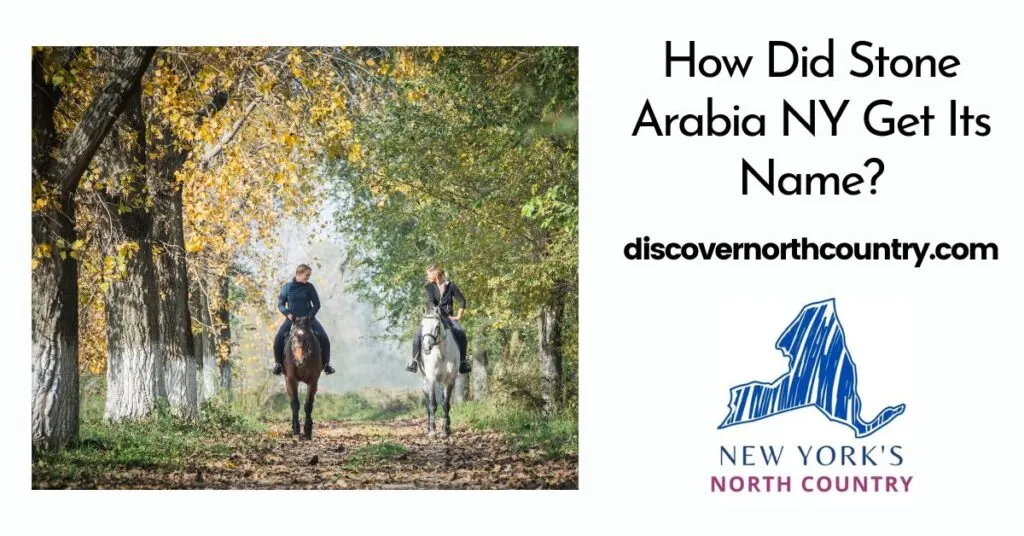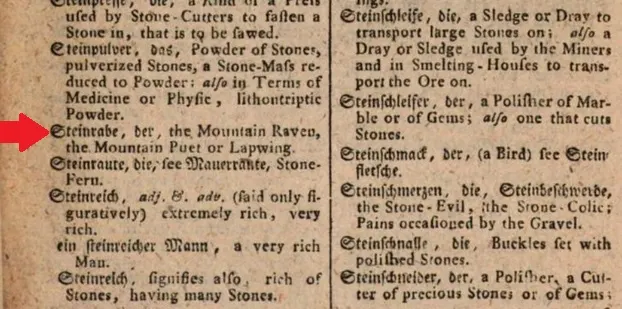Stone Arabia has one of the most unique place names in the entire state of New York. It inspires curiosity and intrigue, and in this article, find out how this tiny settlement got its name.
New York is a large state that is home to many groups of Native Americans, as well as people who are descended from immigrants from dozens of countries around the world. We can find evidence of this diverse and interesting history by checking out how some of the places around us were named.

Where is Stone Arabia?
Stone Arabia is a small hamlet in the Town of Palatine, at the intersection of NY-10 and County Rd. 34 in Montgomery County. If you were in downtown Albany, you could drive northwest to Stone Arabia in about an hour.
This hamlet doesn’t really county as technically being a “town” because of its extremely small population.
The location of Stone Arabia is important to understanding how it got its name because it is the people who lived there historically, and possibly their faith and religious beliefs, that gave it the name that it has today.
Where did the name for Stone Arabia Come From?
There are a few different theories for how the hamlet of Stone Arabia was named. The theories range from comical to likely, and are based on the culture, language and religion of those who probably chose the name.
It’s also important to know that our ancestors weren’t so big on spelling words exactly the same each time they wrote them.
Below are a couple theories as to how Stone Arabia got its name.
The name may come from the Dutch “Steen Arabie”
Many Americans are surprised to learn that the very first European settlers to live in most parts of New York were actually Dutch, and not English, as many people believe. While many Germans from the Palatine (Palz) region of Germany moved to the Stone Arabia area in the early 1700s, they arrived to find descendants of Dutch immigrants already living there.
These Dutch migrants, who had settled in New York decades before the arrival of the Germans, had likely given place names to all sorts of settlements and geographic features in their environment. Therefore, it is possible that the name of Stone Arabia is an English translation of the name “Steen Arabie”, which was written and pronounced with several different variations.
Steinrabe means coryidae in German, a species of raven
After doing a ton of research and reading for this article, I wanted to see if I could come up with my own explanation for how this town got its name. My theory is that the town of Stone Arabia is so named because the early German settlers of the region noticed ravens and named it “Steinrabe”.
These German settlers may have been reminded of the ravens that lived in the forests and mountains of their native Paletine in Germany.
Below is the entry for “steinrabe” in a German-English dictionary published in 1799. It means literally “mountain raven”, and we know that all of the places that may have been called Stone Arabia (more on this below) are in hilly and/or mountainous areas, and have ravens.

The word “steinrabe”, which in English might be pronounced “Stone Rab-y”, is German for the family of birds with the scientific name of coryidae. This word is still referred to in scientific books, such as this one.
Over time, this name of Steinrabe may have also been pronounced as “Steen raby”, then “Stone Raby”, and then eventually, Stone Arabia. “Stein” was likely pronounced “Stoina” in the German dialect spoken at the time, so it is an easy leap to “Stone”.
It’s not too far-fetched to imagine that the German immigrants named the town after something that reminded them of home. Anyone who has driven around the northeast US has noticed that most towns do have names derived in some way from the “Old Country”.
Was there another Stone Arabia in New York?
There may have also been at least one other New York settlement named Stone Arabia. There are stories of other places called Stone Arabia existing in or near Lansingburgh, NY and at another location along the Hudson River.
The fact that there may have been a few other places with the name, as well as the fact that the Stone Arabia Patent was named as it was, does give credence to the idea that the name or phrase “Stone Arabia” may have held special meaning to the people who chose the name.
It does make sense that name could be based on the Dutch name for the town. After all, these were the first European immigrants to make a home in this part of New York.
Is Stone Arabia NY named after another country?
There is no evidence that Stone Arabia was named after another country. The only connection that the name of Stone Arabia has with any other place in the world would be through the use of the word Arabia.
The word Arabia has origins in Arabic and Hebrew, the original language of the Old Testament of the Christian Bible. Since the settlers who named Stone Arabia were Christian, and the name Arabia may have had special meaning for them, this may be why the word was used.
Stone Arabia was not named after any specific country, however.
When was Stone Arabia NY founded?
Stone Arabia was founded sometime between 1668 and 1723. There is reference to a place named “Steen Raby” in 1670 in a 17th century land lease, and official land patent papers were drafted for the Stone Arabia Patent in 1723.
What was Stone Arabia NY called before?
There were indigenous Native American people living in Montgomery County, New York, prior to the arrival of Europeans to North America. It is likely that Stone Arabia had a different name during this time period, but no record could be identified.
If anyone reading this article has information about what the name of this area may have been in the indigenous language of the people of the Montgomery County region, I would love to update this post to include it – so leave a comment below if you know it.
Conclusion
I hope that this article has helped you understand more about how Stone Arabia may have gotten its name, and a bit about the different ideas behind the history of this interesting place.
If you have any questions about something that you read in this post, or if you would like to share which theory about the name you think is correct, please join in the discussion below.
Thanks for stopping by and reading today.
